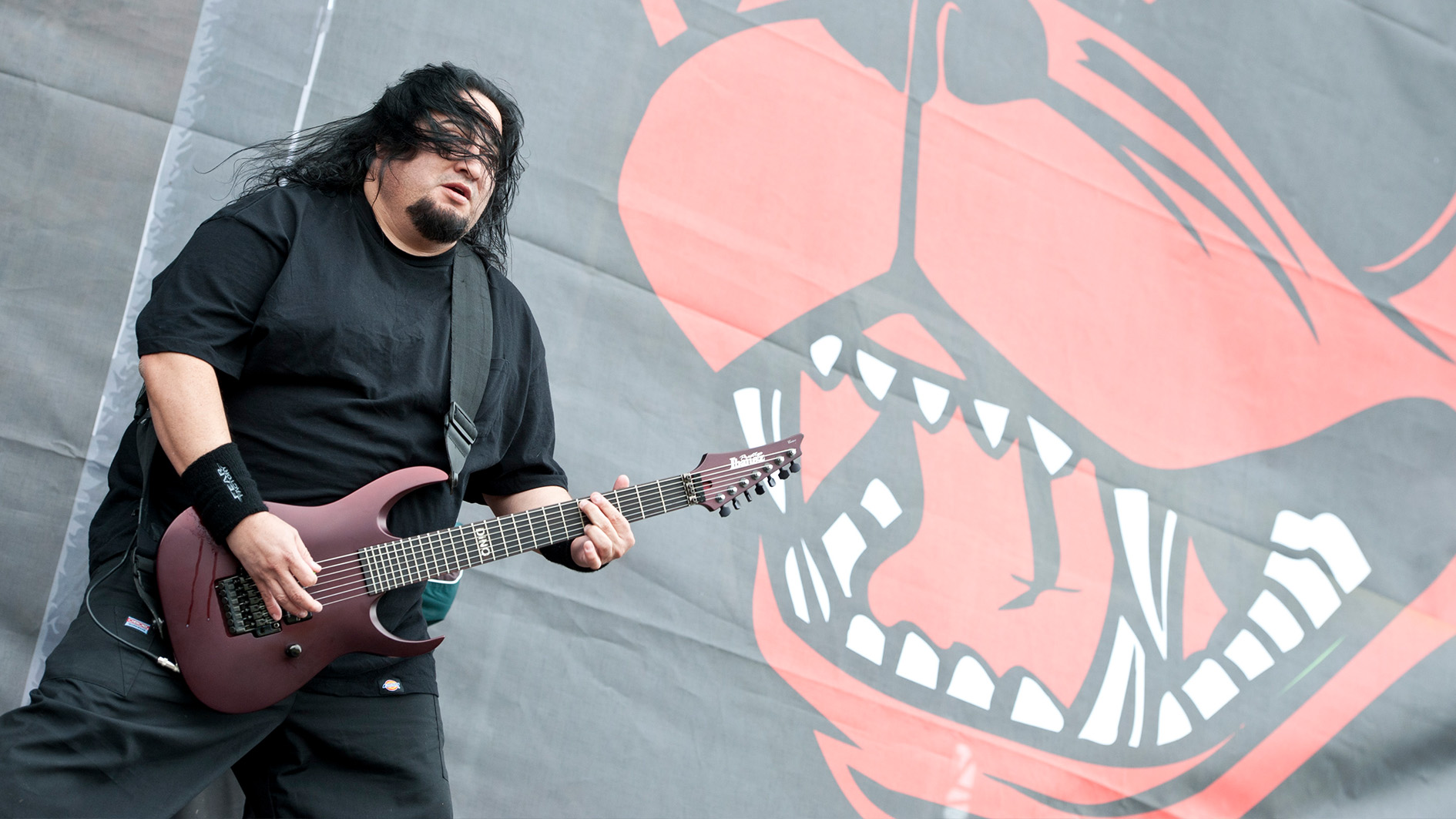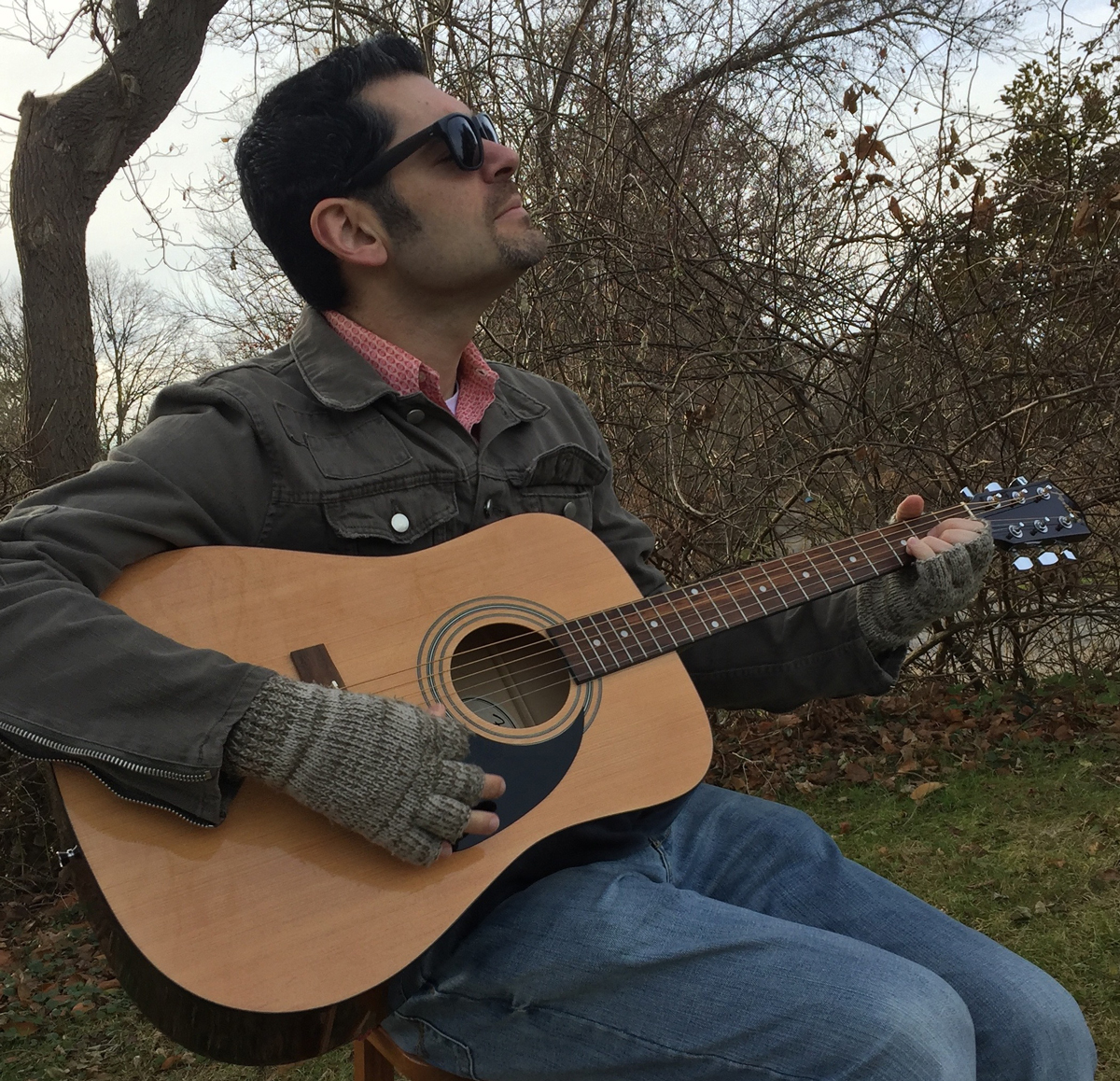Dino Cazares: “I built up my picking hand speed by hanging weights off my wrist”
The Fear Factory guitarist on his machine gun-like technique, compliments from Dimebag Darrell and making the band's long-awaited new album, Aggression Continuum

After the arrival of Fear Factory’s ninth studio album in 2015, Genexus, six years would follow before the arrival of album number 10.
But the wait finally ends in June 2021, with the release of Aggression Continuum. The six-year lag was due obviously in part to Covid rearing its ugly head, but also because of a breakdown in communication between singer Burton C. Bell and Dino Cazares.
“He quit,” explains Cazares. “I didn’t quit. I’m still here. He hasn’t talked to me in three years. So I can only go by what he has said in the media.” And while it’s Bell’s vocals that are featured throughout Aggression Continuum, there will be an as-yet-to-be-named vocalist when the group’s next tour is mounted (“He left us no choice, so I have to move forward”).
When Guitar World spoke to Cazares shortly before the release of Aggression Continuum, we got the lowdown on his guitar gear, playing style, and why Fear Factory’s songs tend to steer clear of guitar solos.
Which guitars, amps, and effects did you use for Aggression Continuum?
“It was a series of two different things. When I was doing the demos and the pre-production, I was using my Kemper that had a Marshall profile that I created a while ago – a JCM800. But when we went to actually record the album, I ended up using a real head – which is the Marshall JCM800, that was modified by Mike Fortin.
“I also used my Pro Tone overdrive pedal – it’s a signature pedal that’s mine. And I also used my signature Ormsby Guitars fanned fret 7-string – it’s called the Blood Camo.
Get The Pick Newsletter
All the latest guitar news, interviews, lessons, reviews, deals and more, direct to your inbox!
“And I also used my signature Seymour Duncan... it looks like a passive, but it’s an active pickup – it’s called the Machete. So that was it – as far as my guitar tone. Nothing too complicated.”
How did you go about creating your trademark precise machine gun-like rhythm style?
“A couple of things. When I really started to get into the more heavier-riffing, and being influenced by thrash metal and death metal... and also hair metal, there were a lot of great guitar players in hair metal – George Lynch, Warren DeMartini.
“There were ankle weights that I would put on my wrist, and I would put on my left hand – my fretting hand – electrical tape around my joints, so it would be hard to press the fretboard.
“So, here I was a 17-year-old kid with ankle weights on my wrist, picking the guitar, feeling the burn on my forearm. I would do it off-and-on for about a year – until I built up the speed. Until my muscles got strong enough to where I could pick faster.
“And I developed my style just from all my influences, but there was one thing in particular that I noticed when I was creating Fear Factory, and I was really getting into more industrial music – a lot of the industrial bands in the ‘80s would sample the guitar.
The tightness in my playing comes from trying to copy a sampler
“Like, if you look at KMFDM, they sampled the mid-section of [Slayer’s] Angel of Death. So did Public Enemy, on She Watch Channel Zero?!. Ministry would sample guitars.
“And I would notice when they would sample guitar, when they looped it, there was always a ‘stop/start’. So, you would hear a little gap of when it starts again and when it finishes. I was trying to emulate a sampler.
“I was trying to pretend that we sampled our guitars. I just couldn’t afford samplers back then, so I would pretend like the guitar was imitating a sampler. I developed this stop/start thing, and it grew further and further.
“So, in other words, I really developed a good technique with palm muting – stopping and starting with my palm, and creating a certain accent by just palm muting. I guess what people would call the ‘djent’, now. But the tightness came from trying to copy a sampler, a loop.”
“I’ll give you an example – there is a song called Self Bias Resistor on the Demanufacture album. I developed that stop [in the riff] to imitate the sampler. It’s kind of a weird way of how I developed that style back in 1990/’91/’92 – around there.”

Why, for the most, part have guitar solos not been included in Fear Factory’s music?
“It’s funny... the first album, Soul of a New Machine, we had three guitar solos, but we removed them – because we were trying to be an industrial band that didn’t have guitar solos.
“And at the same time, living in Hollywood, Musicians Institute was very big. And there was some little jealousy going on, because you had to have money to go to that school and learn how to play like Paul Gilbert or Steve Vai. So, there was a little jealousy on my part that those guys could afford to go do that.
I noticed the guys who write a lot of guitar solos couldn’t write memorable riffs
“I actually talked to a lot of those dudes and tried to jam with those guys. They could write a lot of guitar solos, but they couldn’t write memorable riffs. So I was like, ‘Fuck those guys. I’m going to write some riffs that people like.’ I noticed the power of the riff. So, that’s what I stuck with.
“You’ve got to know that’s just the way I was thinking when I was 18 years old when I first came to LA. But I like guitar solos – I put them in my other projects. For the most part, I kept it out of Fear Factory, because it became a thing for Fear Factory. Which I noticed bands later on in ’94 and ’95 – Korn, Deftones, Limp Bizkit – there were no guitar solos.
“I love the fact that my riff inspires somebody to go and create something that was inspiring for me.
“I’ll give you the perfect example – one of the biggest compliments I’ve ever gotten was when Dimebag Darrell came up to me during the Obsolete album [tour] and said, ‘When I was doing Reinventing the Steel, we were A/B’ing Obsolete and that record, back and forth – because those riffs, they’re so heavy that I had to compare the two of them!’ It was just one of the hugest compliments.”
- Aggression Continuum is out on June 18 via Nuclear Blast.
Greg is a contributing writer at Guitar World. He has written for other outlets over the years, and has been lucky to interview some of his favorite all-time guitarists and bassists: Tony Iommi, Ace Frehley, Adrian Belew, Andy Summers, East Bay Ray, Billy Corgan, Alex Lifeson, Geddy Lee, Les Claypool, and Mike Watt, among others (and even took lessons from John Petrucci back in the summer of ’91!). He is the author of such books as Grunge Is Dead: The Oral History of Seattle Rock Music, Shredders: The Oral History of Speed Guitar (And More) and Touched by Magic: The Tommy Bolin Story.
“It was tour, tour, tour. I had this moment where I was like, ‘What do I even want out of music?’”: Yvette Young’s fretboard wizardry was a wake-up call for modern guitar playing – but with her latest pivot, she’s making music to help emo kids go to sleep
“One of the guys said, ‘Joni, there’s this weird bass player in Florida, you’d probably like him’”: How Joni Mitchell formed an unlikely partnership with Jaco Pastorius








![John Mayer and Bob Weir [left] of Dead & Company photographed against a grey background. Mayer wears a blue overshirt and has his signature Silver Sky on his shoulder. Weir wears grey and a bolo tie.](https://cdn.mos.cms.futurecdn.net/C6niSAybzVCHoYcpJ8ZZgE.jpg)

![A black-and-white action shot of Sergeant Thunderhoof perform live: [from left] Mark Sayer, Dan Flitcroft, Jim Camp and Josh Gallop](https://cdn.mos.cms.futurecdn.net/am3UhJbsxAE239XRRZ8zC8.jpg)
